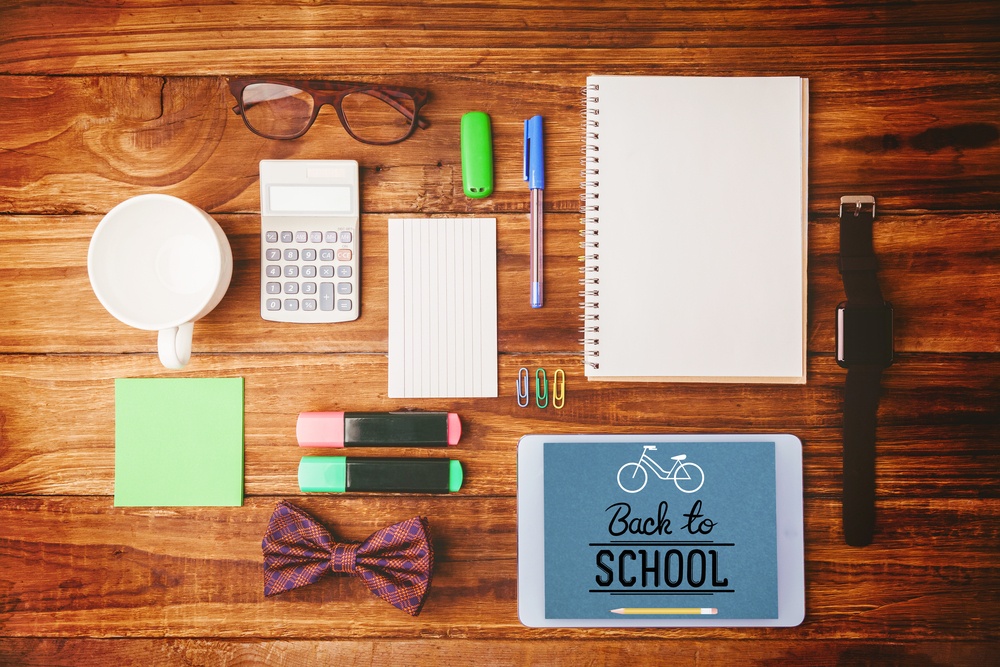July 19, 2024
![[Sunset Finance] Back-to-School on a Budget Tips for Parents - featured image](https://blog.sunsetfinance.net/hs-fs/hubfs/Blog%20Images/%5BSunset%20Finance%5D%20Back-to-School%20on%20a%20Budget%20Tips%20for%20Parents%20-%20featured%20image.png?width=765&height=638&name=%5BSunset%20Finance%5D%20Back-to-School%20on%20a%20Budget%20Tips%20for%20Parents%20-%20featured%20image.png)
Listen to the Article
5:36
Back-to-school season is here, and for parents, that often means watching the bills stack up. From new clothes and classroom supplies to tech gear and activity fees, the costs can quickly add up. But with a little planning and some smart budgeting, you can stay on track and avoid unnecessary financial stress.
Here are some helpful strategies to manage your back-to-school spending this year, plus some checklists to help organize your back-to-school shopping list.
1. Take Inventory Before You Shop
Before you rush to the store or start filling your online cart, do a supply sweep at home. You might be surprised at how many perfectly good items are tucked away in drawers, closets, and last year’s backpacks.
Make it a family activity, have your kids help gather what they already have. It’ll make them feel involved and reduce the chances of duplicate purchases.
Here are starter checklists to help you assess what you already have vs. what you still need to buy:
Elementary School Checklist
- Crayons
- Markers
- Pencils
- Erasers
- Blunt scissors
- Glue sticks
- Wide-ruled notebooks
- Folders
- Backpack
- Lunchbox
- Hand sanitizer/tissues
Middle & High School Checklist
- Mechanical pencils & pens
- Highlighters
- College-ruled notebooks
- Binders & dividers
- USB drive
- Graphing calculator
- Backpack
- Laptop or tablet (if required)
- Combination locks (for lockers)
- Sports gear or uniforms
College Student Checklist
- Laptop or tablet
- Charging cables & power strip
- Textbooks or digital subscriptions
- Notebooks or binders
- Laundry basket & detergent
- Shower caddy & toiletries
- Bedding (twin XL sheets)
- School ID/lanyard
Take notes on what you already have and what’s still needed. This alone can save you a big chunk of change.
2. Set a Budget, And Stick to It
Once you’ve taken inventory, it's time to budget. Back-to-school costs can vary widely depending on your child's grade level and whether they need electronics or uniforms—but having a clear budget helps avoid overspending.
Here’s how to break it down:
- Supplies (notebooks, pens, folders, calculators)
- Clothing & shoes
- Backpacks & lunch gear
- Electronics (laptops, tablets, headphones)
- Fees & extras (sports, clubs, lockers, field trips)
Assign a dollar amount to each category and do your best to stay within it. Pro tip: Use a prepaid debit card or cash envelopes to keep spending in check while shopping.
If you're on a tight budget, prioritize the must-haves and plan to purchase nice-to-haves like new outfits or extra gear after school starts.
3. Take Advantage of South Carolina’s Tax-Free Weekend
This one’s a major money-saver. South Carolina’s Tax-Free Weekend happens this year from Friday, August 1, to Sunday, August 3, 2025. During this time, you can buy school supplies, clothing, shoes, and computers without paying sales tax.
Here’s what’s included:
- Notebooks, pens, pencils, and other supplies
- Backpacks, lunch boxes, and clothing
- Laptops, printers, and some computer accessories
- Dorm room supplies (for college students)
The average savings can be anywhere from 6% to 9%, depending on what you're buying. Make a shopping plan ahead of time so you can take full advantage during the tax holiday weekend.
4. Shop Smart and Early
Don’t wait until the week before school starts when prices are up and shelves are empty. July is the sweet spot for deals and better selection.
Here’s how to save big:
- Sign up for store emails to get early access to coupons
- Follow retailers on social media for flash sales
- Use apps like Honey or Rakuten to find coupon codes and cashback
- Price match—some stores will match competitors if you show proof
If you have multiple kids, consider bulk buying basic items like glue sticks, tissues, or pencils. Then divide and conquer.
5. Look for Community Resources and Free Events
Many local organizations and nonprofits host back-to-school supply drives and giveaways in July and early August.
Places to check:
- Your local school district website or social media
- United Way or Salvation Army locations
- Churches, YMCAs, libraries, and community centers
- Facebook groups for local parent communities
Even if you only get a backpack or a few essentials, every bit helps lighten the load.
6. Consider a Personal Installment Loan from Sunset Finance
Even the best budget can’t always cover the total cost, especially if you’re sending multiple kids back to school or need to replace tech devices. A personal installment loan can help you cover necessary expenses without putting everything on a high-interest credit card.
Benefits of a Sunset Finance Personal Loan:
- Fixed monthly payments that fit your budget
- Fast approval process
- No surprises, just clear terms and predictable repayment
- Local support to help you find the right loan for your needs
This option can give your family breathing room, so your kids start the year with confidence, and you stay in control of your finances.
Start the School Year Strong Without Breaking the Bank
Back-to-school shopping doesn’t have to feel overwhelming. By planning ahead, shopping smart, and tapping into helpful financial tools like personal loans, you can give your child everything they need to succeed, without putting your budget under pressure.
Need help with back-to-school expenses?
Apply for a personal installment loan today or visit your nearest Sunset Finance office. We’re here to support your family, this season and beyond.
Related Posts
July 25, 2024









.png)

